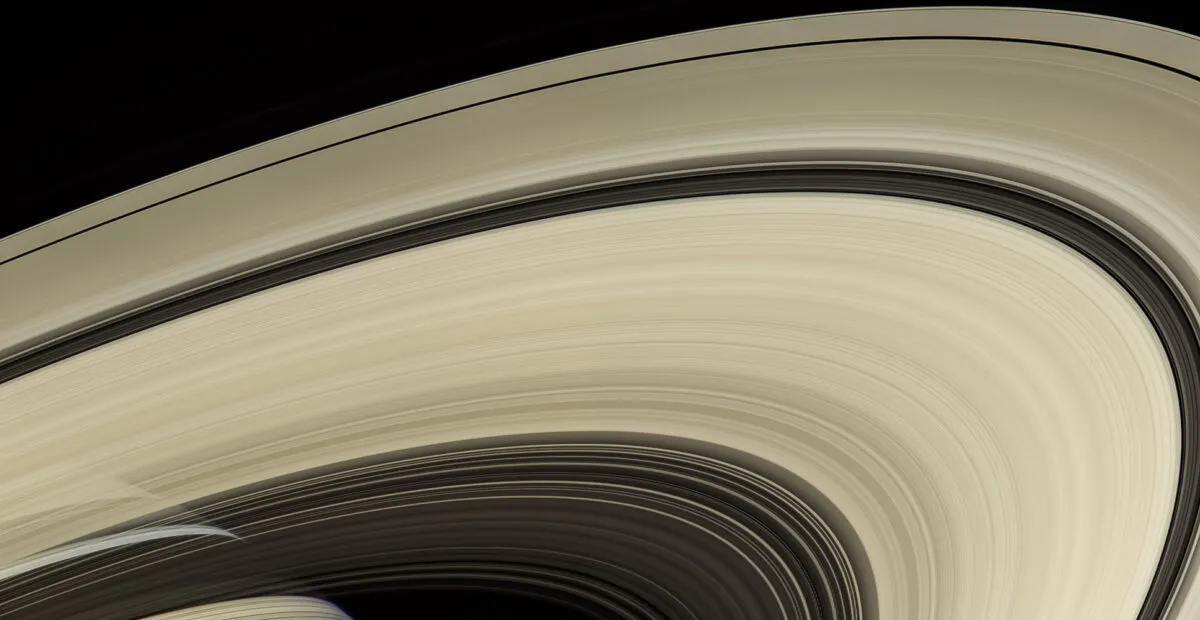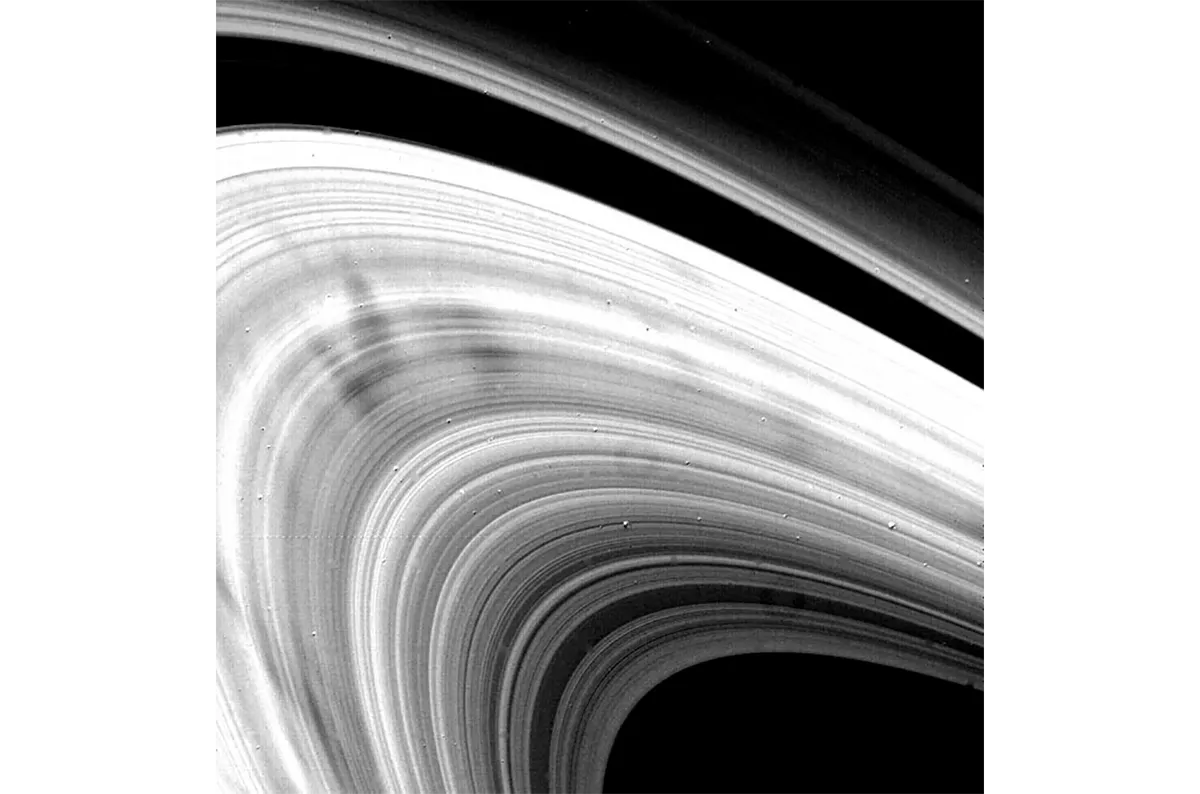Saturn’s magnificent rings are heating the planet’s upper atmosphere, according to a new study.
Using data from the Hubble Space Telescope, the Cassini probe, both Voyager spacecraft and the International Ultraviolet Explorer mission, the study suggests that particles from the icy rings that surround Saturn are raining down into Saturn’s atmosphere.
The effect of this is the heating of the planet’s upper atmosphere.
The discovery came from data collected over 40 years from the 4 spacecraft, tied together by observations using Hubble.
A key piece of evidence is an excess of ultraviolet radiation, which can be seen as a spectral line of hot hydrogen in Saturn’s atmosphere in the image above.

This tells astronomers that something is heating Saturn’s upper atmosphere from outside.
The most likely explanation, say the astronomers behind the study, is that this heating is caused by particles from the rings raining down onto the atmosphere.
This disintegration of Saturn's rings could be due to a range of phenomena including micrometeorites, bombardment by the solar wind or solar ultraviolet radiation.
It was confirmed in 2017 when the Cassini mission’s ‘Grand Finale’ saw the spacecraft purposely plunge into Saturn’s atmosphere, collecting data as it did so.
Data from this final dive revealed that particles are falling in to Saturn from the rings.

"Though the slow disintegration of the rings is well known, its influence on the atomic hydrogen of the planet is a surprise. From the Cassini probe, we already knew about the rings' influence. However, we knew nothing about the atomic hydrogen content," says Lotfi Ben-Jaffel of the Institute of Astrophysics in Paris and the University of Arizona, author of a paper published on 30 March 2023 in the Planetary Science Journal.
"Everything is driven by ring particles cascading into the atmosphere at specific latitudes. They modify the upper atmosphere, changing the composition," says Ben-Jaffel.
"And then you also have collisional processes with atmospheric gasses that are probably heating the atmosphere at a specific altitude."
To reach this conclusion, Ben-Jaffel studied ultra-violet light observations from the 4 spacecraft that studied Saturn, calibrating the archival data with measurements from the Hubble Space Telescope.

"When everything was calibrated, we saw clearly that the spectra are consistent across all the missions. This was possible because we have the same reference point, from Hubble, on the rate of transfer of energy from the atmosphere as measured over decades," Ben-Jaffel said.
"It was really a surprise for me. I just plotted the different light distribution data together, and then I realised, wow— it's the same."
The same process could be used to find magnificent Saturn-like rings around planets orbiting stars beyond our Solar System, known as exoplanets.
"We are just at the beginning of this ring characterisation effect on the upper atmosphere of a planet. We eventually want to have a global approach that would yield a real signature about the atmospheres on distant worlds.
"One of the goals of this study is to see how we can apply it to planets orbiting other stars. Call it the search for 'exo-rings.'"
Read more about this story at hubblesite.org.
Read the paper at iopscience.iop.org.
